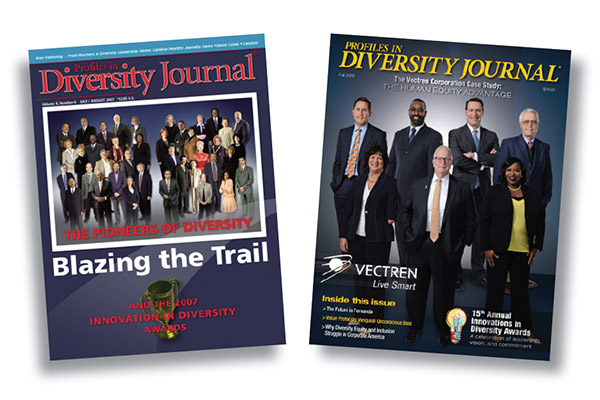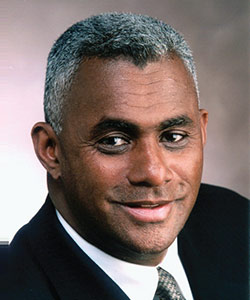By Trevor Wilson, CEO, TWI Inc.

This is the third time PDJ has asked me to write a “where to from here” article, looking at the current state of diversity, inclusion, and human equity. The first article was in 2007, where the writers were dubbed “pioneers of diversity.” I remember thinking that the word pioneer was probably a polite euphemism for the word old. Nonetheless, I was deeply honored to be included among thought leaders and giants like Roosevelt Thomas, Jr., Merlin Pope, and Elsie Cross.
In the first article, I called for an evolution of the diversity discussion. To quote myself, “it’s time for a change. The diversity industry has hit a wall and is poised to evolve to the next stage.” I used the article to introduce the new human capital paradigm human equity—the next step in the evolution beyond diversity and inclusion.
The second article was 10 years later—canvassing a smaller group, since some of the pioneers had passed their expiry date. It was a couple of years after I had published a book on human equity, The Human Equity Advantage: Beyond Diversity to Talent Optimization. The book identified Human Equity as the first management paradigm approached from a positive psychology perspective. It was based on the research of talent masters conducted over a decade, starting with the extensive Gallup database. The article highlighted the top five lessons we had learned about the need to move beyond the group-based focus of diversity and inclusion toward the individual focus of human equity. So let me pick up where I left off.
In 2014, my team was offered an opportunity to undertake a transformation in Human Equity at Vectren Corporation, a 1,900-employee, regulated utility company located in Evansville, Indiana. Then CEO Carl Chapman noted that the company was an “unlikely poster child for human equity management.” Vectren was a company in the classic throes of diversity fatigue, with years of diversity, equity, and inclusion (DEI) efforts behind them, but little in the way of measurable outcomes to demonstrate the success of their work or prove the promise of equity. They needed, and they wanted, a different way.
Perhaps the realities of diversity fatigue provided the context necessary for transformation. Working together, we brought all of the global lessons we had learned in Human Equity to Vectren. We insisted upon, and received, many things, which we held were the essential raw materials needed for transformation. These included the full commitment of the C-level; executive-level champions with significant reputational capital to actively shepherd work in four key “pillars” of the program, including those pertaining to talent attraction and retention, and leadership development; the integration of the Human Equity plan into the overall business plan of the company; a strong and vibrant task force—90 people strong—to create a Human Equity movement within every facet of the company and outside it, even to include suppliers and customers; a switch in thinking from the group focus of Equal Opportunity to the individual focus of Human Equity; and a willingness to set up an experiment in real time to prove, once and for all, that equitable leadership practices would amplify employee engagement which, in turn, would increase the stock price of the corporation and drive significant shareholder value.
In four short years, diversity fatigue was replaced with Human Equity vigor. Scores measuring equitable leadership soared. Employee engagement metrics increased by 20 percent to their highest levels ever. Employee attrition declined and customer satisfaction improved. The company’s stock price set new records and soared 100 percent, from $36 in 2014 to $72 in 2018, resulting in Vectren being acquired by Centre Point Energy for $6 billion. The vernacular changed from diversity management as a special program to Human Equity as a corporate imperative. And executive management recognized that Human Equity principles were a primary driver of business success.
Author Jim Collins, in his seminal work, Built to Last: Successful Habits of Visionary Companies, introduced the idea of “BHAGs”—Big Hairy Audacious Goals—goals so clear, compelling, catalytic, and emotive that they have the power to remarkably transform.
With Vectren, we decoded the genome of total executive commitment. It’s about embracing the power of BHAGs and speaking the language of catalytic business transformation. It’s about saying—and, of course, proving—that intelligent investments in Human Equity can materially raise a stock price and unlock millions, or even tens of millions, in untapped shareholder value in the same way that investments in disruptive technology or groundbreaking business processes can. It’s about moving past the value proposition that DEI efforts will enhance the proximal outcomes of employee engagement or workforce representation, to the value proposition that Human Equity can actually grow a business even in the most demanding and competitive industries.
As DEI and Human Equity practitioners, we must think and speak more like those who occupy the C-suite. We must set audacious and compelling expectations that our work will produce significant dividends, with the willingness to be held accountable for those expectations. We must see our inherent role as one of creating the conditions for all people to express and exploit their unique superpowers, so that they contribute to building great, visionary companies. And we must embrace, once and for all, the solemn task of acting as business developers, not just of equity practitioners. When we achieve and activate these things, we will finally earn our rightful place at the business transformation table.
Editor’s Note: The full Vectren Corporation Human Equity case study appeared in the 2018 fall issue of Profiles in Diversity Journal.

Trevor Wilson
Global Human Equity™ Strategist, Toronto, ON. He is a dynamic speaker, a visionary thought leader and a global diversity and Human Equity™ strategist. Wilson is founder and president of TWI Inc






